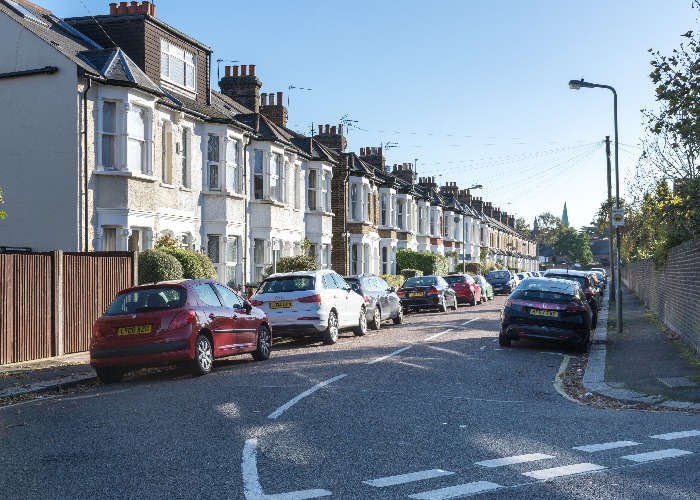From refueling to MOTs: looking after your car during the Coronavirus lockdown

With fewer trips allowed, you need to ensure your car is kept in running order.
A nice drive in the sunshine is one of life’s great pleasures, but it’s not something any of us are going to be doing for a while.
Indeed, the Government’s instructions are for everyone to stay at home, only leaving as infrequently as possible and in certain circumstances.
So what does this mean for the health of the nation’s cars? And what can we drivers do to keep our motors in the best possible condition?
Keep it essential
The guidelines from the Government are pretty clear about when you can use your car. It’s fine if you’re heading to the supermarket or to pick up medication, or if you provide care to an older, vulnerable person.
Similarly, some people are unable to work from home and still need to be able to travel.
But all other journeys should be avoided.
This also applies if you want to get in some exercise.
While you might fancy a drive to somewhere scenic to get you daily walking in, this isn’t really in line with the guidance ‒ you should try to stick to walking or running near your home.
Plan on getting a new car when the lockdown ends? View your finance options with Car Finance 247
What if I break down?
None of us have a crystal ball, allowing us to see precisely when our car is likely to develop issues.
So there will inevitably be some motorists who find their vehicle breaks down either on the way to or home from one of these approved journeys.
Thankfully, breakdown services like the RAC and the AA are still operating, so you can get some roadside assistance.
Battery health
Understandably, plenty of drivers are a little concerned about the battery in their car at the moment, given the relatively little amount it is being used.
While it might be tempting to simply start the car up, the RAC says this is unlikely to actually do much for the battery. In fact, it may end up draining a weak battery.
The RAC suggests that if you keep your car in a garage, then you might want to consider investing in a ‘trickle charger’ which will help give your battery a boost.
Otherwise, you’ll simply have to rely on those supermarket trips to keep the battery going.
Couple of people arrived today at our Covid-19 testing site at Tallaght Stadium with flat or almost flat car batteries. We managed to get them started but worth noting the importance of starting your car every week or two if it’s off the road. You might need it in an emergency! pic.twitter.com/cU1uxuNHlp
— Dermot Looney (@dlooney) March 31, 2020
Refueling
The good news is that with far fewer people heading out onto the roads, there should be more than enough fuel to go round.
It’s important to be extra careful when filling the car up though, for example by using the disposable gloves provided when handling fuel pumps, while paying at the pump rather than at the cashier is also a sensible idea.
And of course, it’s important to wash your hands properly once you get home, avoiding touching your face in the meantime.
Electric car? Pull the plug!
Many electric vehicle owners might need to unplug their cars to avoid harming the long term battery life.
“General manufacturer advice is that if 100% battery range is not required for your journey, you should routinely charge to no more than 80% to reduce battery degradation and maintain its efficiency over time," said David Watts, consultant at leasing company Arval UK.
Some models come with the functionality to set a charge limit so there's no need to do anything, both others will need to be left unplugged and manually monitored, normally once a week, he adds.
Ideally, he suggests keeping your car in the 50% to 80% charge range as letting it drain completely can also cause harm.
“During long periods of relative inactivity such as we are likely to see during the lockdown, all electric cars will experience a degree of battery charge loss or self-discharge over time due to power drain from electronics within the vehicle, generally in the region of 2% per month.
"However, the level depends on the car or van and the mode in which it has been left – such as standby or shutdown," he adds.
What about my MOT?
If you have Coronavirus symptoms, or you’re in the vulnerable group, then you should not take it for an MOT.
The Department for Transport said it is working with insurers and the police to ensure motorists are not “unfairly penalised” for not being able to get an MOT while being “shielded”.
All cars with an MOT date after 30 March have had their deadline automatically extended by six months. You don’t have to do anything, beyond ensuring your car remains safe to drive.
Revealed: the cars most likely to fail their MOT (and why)
Keeping your car clean
Just heading out in the car at the moment requires a bit more thought, particularly over exactly which areas of the car you touch.
It’s a smart move to use antibacterial wipes on all of the areas that are regularly touched, such as the gear stick, steering wheel and indicators.
Toyota has also produced a video highlighting which areas you should focus on, which may be worth a watch.
This is also an opportunity to carry out some of that all-important car maintenance that too many of us ignore. So take this chance to check the air pressure in your tyres, that your washer fluid is topped up, and your water levels.
Tax and insurance
You do still need to tax your vehicle during this period. If your car is benefitting from an extended MOT, then the DVLA’s IT systems will recognise that a valid MOT is in place, allowing you to tax the vehicle as normal.
You can do this online, over the telephone at 0300 1234 321, or at the Post Office.
Similarly, you will need to have insurance in place as normal.
Most Recent
Comments
-
So do we just add 6 months to the current MOT expiry date?
REPORT This comment has been reported. -
What he has not mentioned is the need to move and maneuver the car so that it is then standing on a different place on the tyres .They can develop flat spots and splits if left for a long in one position so Just driving it backwards or forwards then parking it back where it was will not do it. It needs to be maneuvered so that there is a better chance of the wheels then being in a different position.
REPORT This comment has been reported. -
My daughter had an MOT booked for 27 March, 3 days before the deadline. However the mechanic had to self-isolate the day before and she was unable to get an appointment elsewhere within a reasonable time frame. The cut-off date should have been set earlier than it was.
REPORT This comment has been reported.
Do you want to comment on this article? You need to be signed in for this feature









07 April 2020